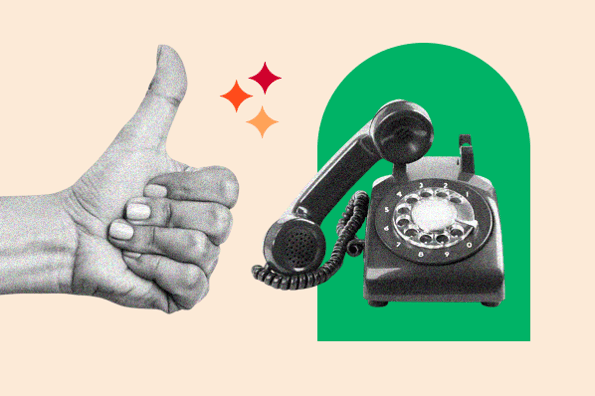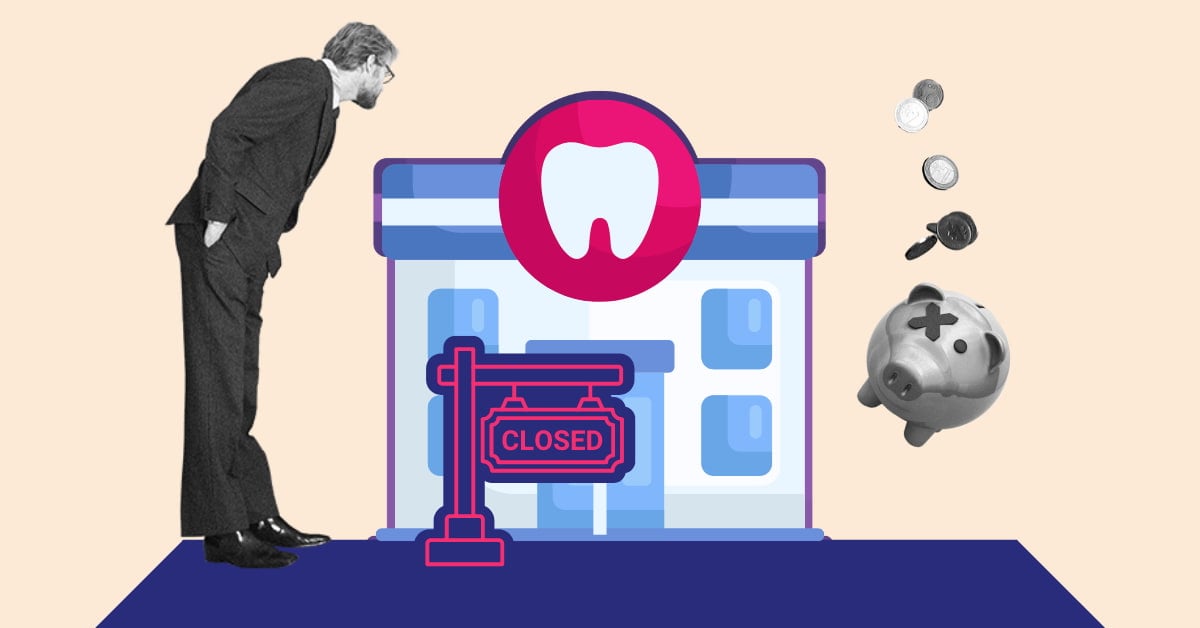Think about the last time you called a customer service desk. Before the call started, you may have encountered a brief message saying, "This call may be monitored or recorded for quality assurance."

Likely, you moved past this message, only slightly concerned about the Big-Brother-esque privacy invasion. I never thought too much of it, either.
So, does the act of monitoring and recording calls between customers and customer service reps improve the experience? What actions can be taken based on the observed conversations?
Let's explore those questions, beginning with what call quality is and why it's important to customer service call centers.
What Is Call Quality?
Call quality measures the efficiency and effectiveness of conversations between customer service representatives and customers. High-quality calls are polite, professional, understanding, timely, and effective at solving the problem at hand.
The calls that customer service reps conduct increase customer lifetime value because, when done well, it eliminates friction the customer is experiencing. Knowing this, reps should interact with customers in a way that leaves them impressed, with a clear solution, and knowing what they can do to prevent recurrences.
But you can't ensure that outcome unless you focus on improving call quality because each rep will have different skills, and monitoring call quality can help identify gaps that need to be addressed.
Quality Monitoring
Quality monitoring enables organizations to analyze and capture information derived from customer interactions. Any type of interactions that your business can record could be used for quality monitoring, such as:
- Call recordings
- Customer email exchanges
- Social media interactions
- Customer satisfaction surveys
These all can provide insights that allow companies to see more of what customers are thinking, but why go the extra mile to analyze all that information?
Why Quality Monitoring is Important
According to Forbes, 96% of customers will leave if they receive poor service. While most are willing to endure a few less-than-ideal interactions, they won’t stick around and keep making purchases if service is consistently poor.
Quality monitoring helps identify areas of improvement in your business — such as customer response, order processing, and first call resolution rates — and then create policies and processes that help deliver a repeatable, high-quality experience for customers.
We also asked a HubSpot Customer Support Manager, Rivera Johnson, for her take on why quality monitoring matters for a different perspective.

Quality monitoring and its importance extends beyond business, often helping employees make strides for personal improvement, too.
Benefits of Quality Monitoring
Effective call quality monitoring offers three substantive benefits for businesses:
Pinpointing Problems
Reps are people — which means they have strengths and weaknesses when it comes to handling calls. Some may excel at talking down frustrated customers, while others may have great skills in creating new customer connections. On the flip side, some may struggle to deal with angry callers and others may have issues responding to unexpected requests.
Robust call quality monitoring helps managers pinpoint problem areas and offer specific training to drive overall improvement. Monitoring also makes it possible to identify areas where staff excel and ensure they’re rewarded for their hard work.
Improving Feedback
As noted above, quality monitoring is an ongoing process. Regular coaching sessions are critical to delivering actionable feedback that staff can use to improve call outcomes and boost customer satisfaction.
We asked one of HubSpot’s very own Customer Support Managers, Steve Rizzi, for his perspective on quality monitoring, and he shared, "Being able to listen in to a live call or replay a call with a member of your team is one of the best coaching exercises out there. It’s similar to football teams watching film before an upcoming game. We are able to hear how we approach certain situations and what verbiage we use. Having an individual listen to themselves on a call creates a lightbulb moment so we are able to solve for the customer even better."
Call quality monitoring provides specific details you can’t get from conversations with staff. They may have forgotten details or may choose to omit certain information. By combining call recordings with quantitative data on handling times and overall satisfaction, managers can provide detailed and targeted feedback to team members.
Setting Specific Goals
Goal-setting helps reps achieve measurable success. Call monitoring makes this possible by identifying areas for improvement and providing a path to achieve these goals. Consider the goal of reducing overall handling time. By reviewing recordings, agents and managers can identify areas where conversational flow could be improved or different questions could be asked to facilitate faster handling without compromising service. Regular feedback meetings can then help track the progress of this goal.
These benefits will improve quality assurance processes at a departmental level. Now if you're not getting these results just yet, here are some steps you can take to monitor and improve your team's call quality.
How to Improve Call Quality
- Hire a team to monitor call quality.
- Develop scorecards.
- Differentiate monitoring based on types of calls.
- Recognize successful behaviors.
- Save prime phone calls as future examples.
- Improve processes, not just employees.
- Hold in-person reviews.
1. Hire a team to monitor call quality.
First, select people who are most qualified to measure call quality. You may even consider selecting a team of internal employees. This team should include customer service managers or senior agents who thoroughly understand customer service. These people know your company the best and have more experience with your customers.
You can also hire a third-party team to handle call center quality assurance. These services provide trained professionals to measure your call center's call quality. The benefit of this approach is unbiased analysis.
2. Develop scorecards.
Once you have a team in place, they should create scorecards highlighting the factors agents will be evaluated on. You might test for how long the call lasts, how well the agent listens to the customer's problem, and how the agent handles an upset customer.
This is a great opportunity to involve your agents in the quality assurance process. Ask for their input and consider their experiences when developing your benchmarks. By including your call center agents, they'll better understand what they're being scored on and will be prepared to commit to those benchmarks.
3. Differentiate monitoring based on types of calls.
It may make sense to create one quality assurance scorecard to measure all of your calls. However, this raises some red flags. After all, does every agent have the exact same job? Is every phone call identical?
Some customer service calls are proactive, like those made by a customer success agent to offer new products and services. Others are reactive, such as support calls initiated by the customer. In some cases, the customer might have a simple problem and is happy to work with your team. Other times, customers might start the call frustrated without giving your rep a chance to salvage the situation.
One quality assurance scorecard can't accurately measure every type of customer service call. A few scorecards should be made to ensure agents aren't receiving poor scores just because they have to deliver bad news.
4. Recognize successful behaviors.
When monitoring for quality assurance, it's easy to get wrapped up in the mistakes and shortcomings of customer calls. These are important to mention to your agents when offering them feedback.
However, focusing solely on the negatives may hinder your team's long-term success. Make sure you also recognize the positives, so your agents know their strengths as well as their weaknesses. Balancing the good with the bad is the best way to both reward employees and present them with opportunities for improvement.
5. Save prime phone calls as future examples.
Some phone calls are close to perfect. The agent ticks all the boxes and leaves the customer feeling delighted. Call handling times are ideal and the rapport created is natural and easy.
These are the kinds of calls you want to save and show to other agents as part of quality assurance training. Note the specific choices the representative made and how these choices created a more positive experience for the customer. Sometimes, seeing an example of high-quality customer service helps employees get a better grasp on what's being asked of them.
6. Improve processes, not just employees.
It's important for quality assurance teams to know not every shortcoming is the fault of a customer service rep. Mistakes are made, and most employees will own up to them. However, sometimes a recurring problem that emerges across multiple agents means an internal process needs to be revamped.
For instance, you might notice that your support team needs to reduce your customer's time on hold. Start by reminding your reps that all customers need help and sometimes it's acceptable to follow up with them if the case is more complex. This might motivate your reps to pick up the pace, but as customer demand increases, your team will struggle to handle the pressure. By investing in customer service tools, you can automate your support process and improve your team's overall efficiency.
7. Hold in-person reviews.
When you've finished call monitoring, offer feedback to agents on what you've observed and how you've scored them. Your employees should understand and implement your feedback moving forward.
It's essential to meet in person with employees to discuss their performance. Online reviews or emails will not suffice, as employees could miss the feedback, misinterpret what you're saying, or be confused and require further explanation. It's better to establish a relationship where agents feel comfortable opening up to you, and that's best accomplished through an in-person setting.
To ensure quality monitoring delivers actionable results, we have some tips your reps can use to improve customer interactions over the phone.
Call Quality Monitoring Best Practices
1. Listen in.
First, implement monitoring solutions that let you listen in on customer/agent interactions. Make sure both the agent and customer know they’re being monitored and don’t get actively involved unless necessary.
The goal here is to listen and understand how current calls are being handled. What type of questions are agents asking? Are they relevant to organizational goals? Do customer service interactions lead to positive, sales-driven outcomes? Listening in lets you create a baseline for current call processes — where are they working? Where are they failing? What needs to improve?
2. Capture feedback.
Next, it’s critical to capture feedback across all of your customer service channels. This includes phone calls, emails, social media, questionnaires, and any other customer interactions. This feedback data provides the foundation for service change, so long as it is regularly collected and reliably sourced.
3. Ask questions.
The ultimate goal of quality monitoring is to improve the customer experience — so it only makes sense to ask customers what they think. When calls are complete, ask customers to take a short survey or have agents ask customers directly how they felt about the service they received, if there was anything they would have changed, and how likely they are to reach out again if they have questions or concerns.
4. Improve skills.
The data collected from listening in, capturing feedback, and asking questions can then be used to improve staff skills and call outcomes. For example, if you find there are specific questions that aren’t being asked during calls, you can create a new call process that prioritizes these queries. It’s worth consulting with your agents during this process to ensure that what’s being asked works with their workflow.
5. Track impact.
Once you have new processes in place, track the impact on customer service interactions. Use metrics such as average handle time and overall customer satisfaction to evaluate the efficacy of your new processes. If something isn’t working, try again until you find a better fit.
6. Continually evolve.
Quality monitoring is a continual process. As customer preferences and company priorities change, so too will expectations around quality and satisfaction. In practice, this means creating sustainable monitoring frameworks that allow you to continually evaluate performance, compare outcomes to current metrics, and make changes as needed.
And we know that not all businesses are the same, and that many have designated call center teams. We want to highlight just how important quality assurance is to a call center team’s goals.
Call Center Quality Assurance
Call center quality assurance is the process of observing and analyzing customer service calls. It tests for a variety of factors: employee attitude, the effectiveness of problem-solving, customer satisfaction, and more. This process assures every customer is treated with respect and offered a positive, competent, and timely brand experience.
Quality assurance optimizes the financial return of a call center. If customer service reps are too slow or get distracted too frequently, the company loses money from paying employees who aren't doing their job. And, if reps induce negative experiences, this can increase customer churn and lose potential business.
Making the Call
Call quality monitoring can help your company establish policies and processes that maximize customer satisfaction and minimize wasted time. By regularly reviewing calls, it’s possible to pinpoint areas where specific agents need more training and identify frameworks that aren’t living up to
Both provide the impetus for change and can help your business build a call handling procedure that helps callers feel heard and gives agents the tools they need to deliver a superb customer experience.
Editor's note: This post was originally published in May 2019 and has been updated for comprehensiveness.




![Why Gen Z Demands Exceptional Customer Support [New Data]](https://blog.hubspot.com/hubfs/Featured%20Image%20Template%20Backgrounds_AC%20Copy.png)






